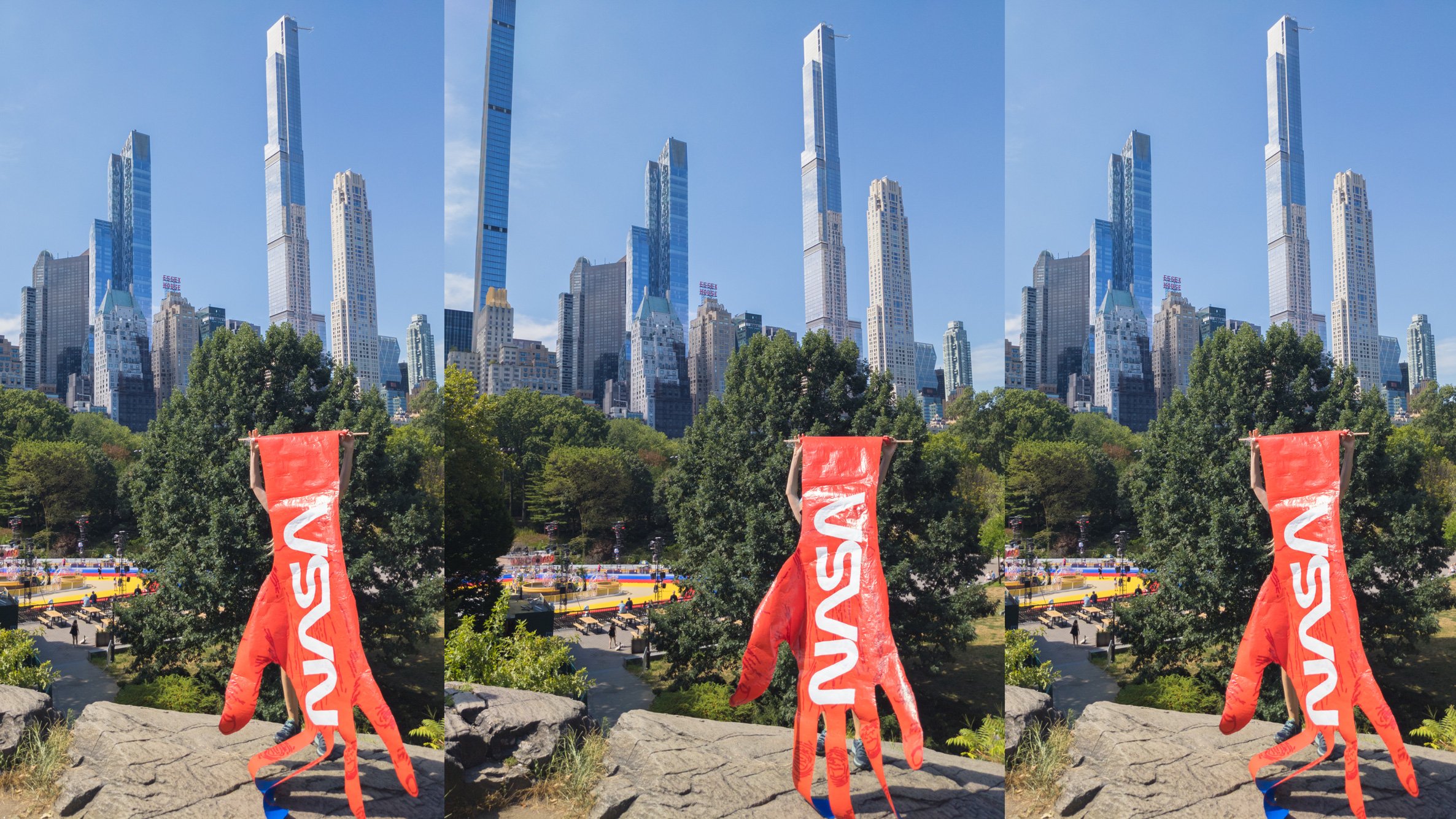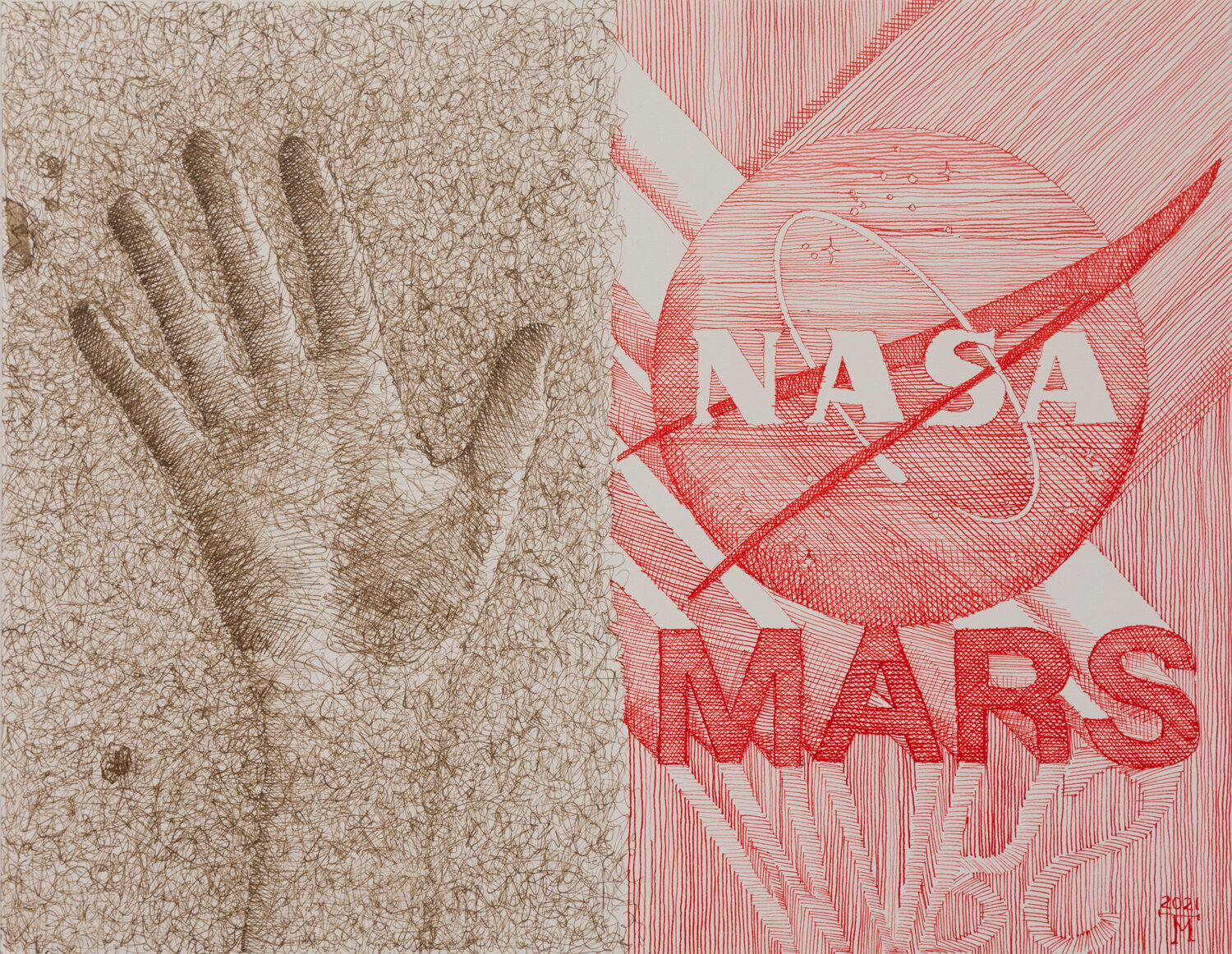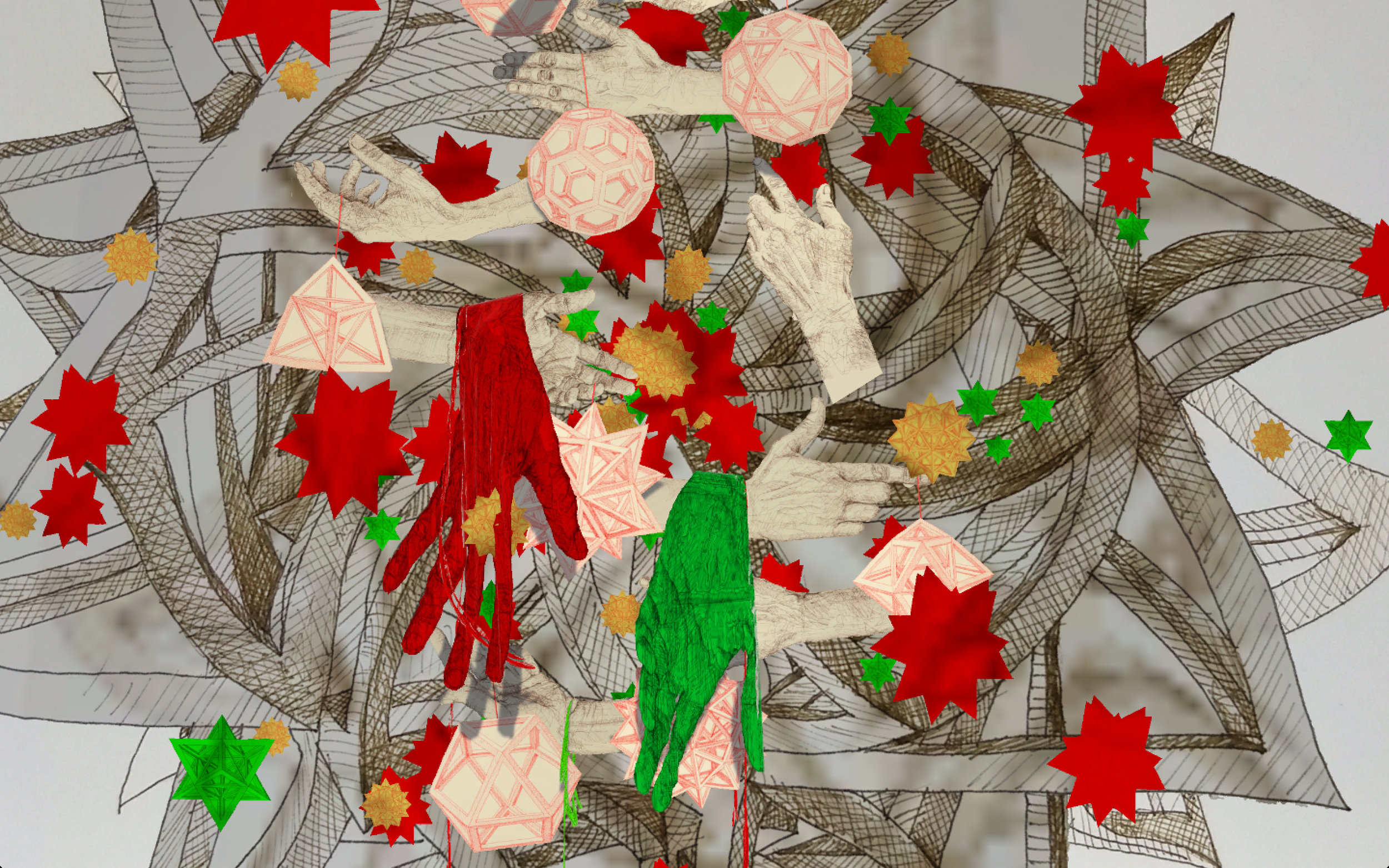Multiplanetary
Christmas on Saturn, animation and simulation with pen and ink drawings, 2019
Statement
I have always been obsessed with space. When I was five I played with a battery-powered Lunokhod toy and in elementary school had convinced other kids I was from outer space. I was glued to the television watching Carl Sagan's Cosmos and Sci-Fi shows like Blake's 7. Then came Star Wars, I saw it when I was 12 in a small cinema (for some reason) full of gypsies and it was the most amazing thing I had ever seen. My blueprint for life came from Isaac Asimov's and Arthur C. Clarke's books. When I grew up I worked as an artist at Lucasfilm on Star Wars and this was my dream come true. I still obsessively follow the developments at NASA and SpaceX.
Mars Landscapes are based on photographs by the Perseverance and Curiosity NASA rovers on Mars, as well as the NASA Mars Orbiter. For the Elon Mars portrait, I used a photograph I found on X.
I examine tiny rocks and pieces of dirt from another planet and then reproduce them in pen and ink or oil into Mars landscapes. I observe the rocks and their features and try to understand the processes that made them. Some have poked holes or have been sanded smooth by the wind, some rocks have red dirt or strange corrugations or layers like a cake. I study the Mars rover's camera data on NASA's website to understand the actual colors as seen by a human eye, to understand how the Martian atmosphere changes the shadows and the colors.
I see the rocks as creatures, there's a bat, the balancing rock is like people, one is a sand crab and there are a couple of sand dragons gliding through the sand sea. The big one is Jabberwocky. Like a strange zoo. They are talking and jawking, to me, and among themselves with a bit of sand in the teeth. The cast shadows are almost material and a part of the structure of the massifs.
I use natural pigments in the inks and the oil paints, ground dirt and red oxides suspended in medium with similar chemical composition as the rocks on Mars. The oil paintings are built using old Masters technique by depositing layer on top of a layer, in a way similar to how sedimentary rock is created. I pay attention to the surfaces of the paintings in the same way I pay attention to the surface of Mars.
With pen and ink, I use quick squiggly lines. The brush strokes have the history of the movement of my hand just like the rocks on Mars have in them the history of the planet. Sometimes I incorporate imaginary monolithic structures made with dip pen and ink into the ink landscapes. The dip pen scratches the paper into an entirely different man-made surface.
In the oil paintings, I abstract the ochres and reds and features of Mars into different planes and thicknesses of paint layers. I use damar varnish glazing for the rocks and they are built into more corrugated thick layers of paint. The large dirt planes are represented with a flat matte surface. I use ink-like lines for some rock, dirt, or mountain features as a connection to my ink paintings. I use the materials and thickness of layers of paint to express the stratification I have observed in the rock material. I use natural pigments like Mars Red, Yellow Ochre, Burnt Umber, and Mars Yellow, they are natural pigments, ground dirt. The Reds contain iron oxides that make the actual Mars surface red. The support is Belgian linen some of which I prepared from scratch using rabbit skin glue and lead white ground.
I am planning a series of oil paintings based on my favorite Martian rocks and features - in the same paint space as the Mars Landscape oil painting.
I work some of my drawings into animations that incorporate sounds from Mars and other planets. I am also planning a Mars The Red Planet Installation.











